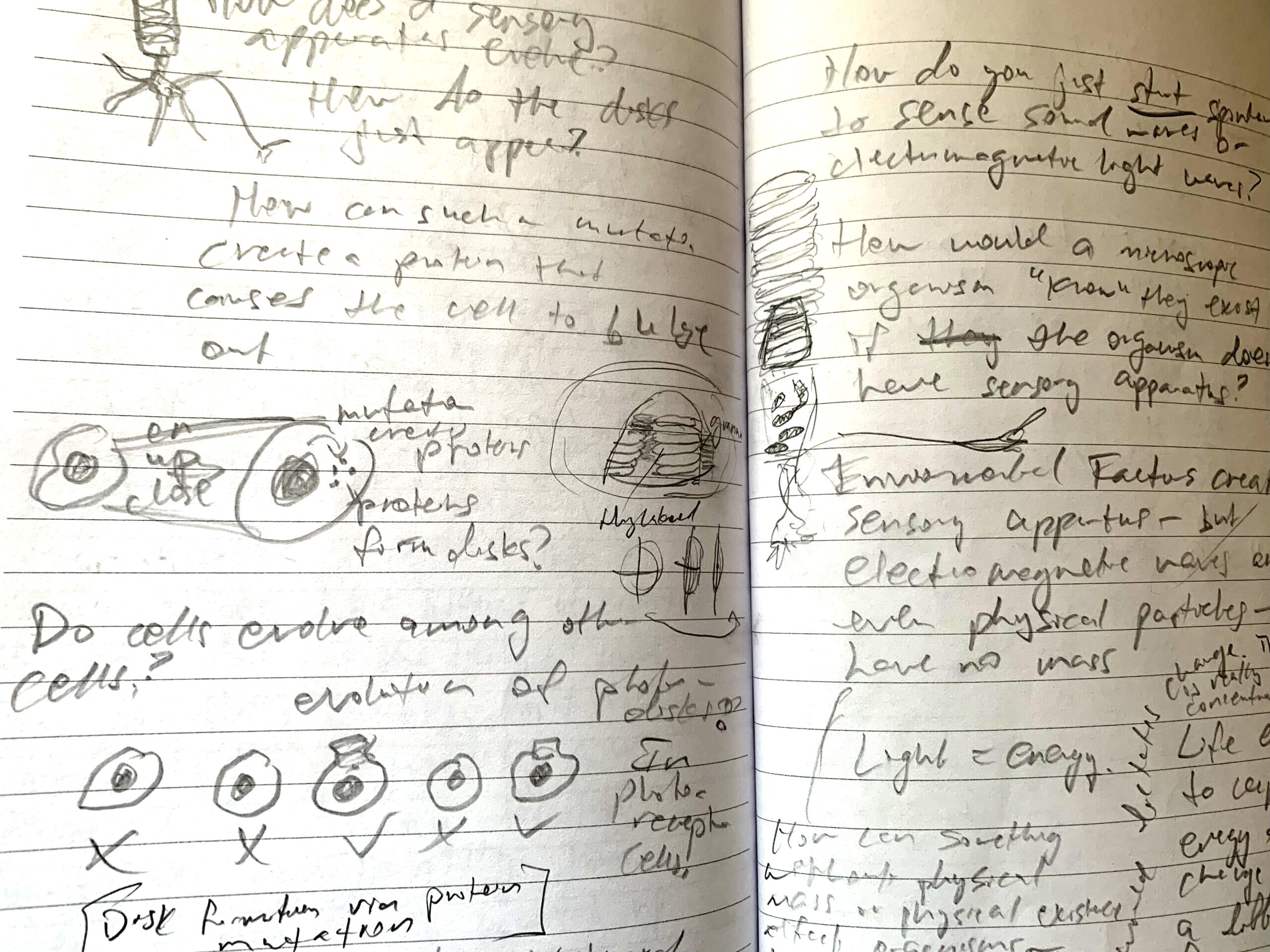The leading question in the ability to perceive light is how did light-sensing cells evolve. Eye evolution is discussed ubiquitously, but what is more fundamental is how the first photoreceptors came to be.
The construction of the visual world relies solely on the disk shape which captures light in photoreceptors. This disk shape is also present in chloroplast, an organelle within plants. How did these disk shapes evolve to refract and collect light? Did they evolve from each other, or separately. Does light naturally produce disk formation?
What’s known
It is obvious that the complex photoreceptor and thereafter retina and lens evolved gradually from compounding mutations in the eye. Such findings are thoroughly explained by the neuroscience literature such as Lamb et al.’s peer-reviewed paper published in Nature Reviews. This is the general order of natural selection, a mutation in a gene causes the formation of proteins that change the structure and therefore function of the cell. If the mutation generates a favorable, survivally beneficial behavior, it is passed to future generations.
Cells as individuals
But is the mutation present in one cell or all cells? Do cells evolve and compete among nearby cells, like in a microscopic environment within an organism in the same way that organisms compete with other organisms within a population? Must the mutation be in a gamete cell— if an external cell on the surface of the skin meticulously, spontaneously forms a new protein, how is it possible that its offspring will inherit that mutation? What is the probability that at random chance there will be a mutation in the gene of a chromosome in a sex cell related to eyesight when sex cells are unexposed to light?
The first light
In the case of photoreceptors, the gradual complexity and building of light-sensing apparatus is obvious, but what is not obvious is what kick-started the first mutations. How did cells just spontaneously start to sense sound waves or electromagnetic light waves? How could a microscopic organism “know” light waves exist if the organism doesn’t have a sensory apparatus? What is the probability the sensory cells are tuned to the specific frequency of the visual spectrum and not another frequency of wavelength like microwaves which are also ubiquitous in the environment? Where there other photoreceptors that interpreted other frequencies of the electromagnetic spectrum that died out?
Random chance creates mutations, but the environment dictates evolution because it determines which mutations are useful and which are not. It is the environment that over time builds structures within organisms.
Energy in the environment
Therefore, environmental factors created sensory apparatus— but electromagnetic waves (light) aren’t even physical particles because photons have no mass. Can something without physical mass or physical existence affect organisms? Yes, though energy, as has been the case for disk shape formation in photosynthetic bacteria billions of years ago. If light has no physical mass, it is energy, not the material world that determines evolutionary change. The environment is both different concentrations of energy and physical molecules.
Life evolved to capture energy and change it into a different form of energy, either to use chemically for itself. This dissipates heat and diverts energy from its starting concentrated mass. This conversion and reconversion and repurposing of energy leaves heat and chaos and disorder of energy (entropy), following the natural order of the second law of thermodynamics — that entropy in the universe is always increasing. A characteristic of human beings is that humans can build and operate complex machinery that can convert between different forms of energy (electromagnetic, mechanical, thermal, etc) Did intelligence evolve to further increase entropy?
Convergent evolution
Plants also have disk shapes in photo-sensing organelles called chloroplast.
Animals did not evolve from plants, nor from photosynthetic bacteria. So the disks for sensing light in primitive organisms evolved separately. Therefore, structures may not have evolved via divergent evolution.
Convergent evolution of disks in photo-sensing apparatus: the disk structure that interacts with light evolves on its own, separately in chloroplast and the photoreceptor.
Plants evolved to light by creating using it as energy while animals evolved to light by seeing it.
References:
Lamb, T. D., Collin, S. P., & Pugh Jr, E. N. (2007). Evolution of the vertebrate eye: opsins, photoreceptors, retina and eye cup. Nature Reviews Neuroscience, 8, 960-976. https://www.nature.com/articles/nrn2283














